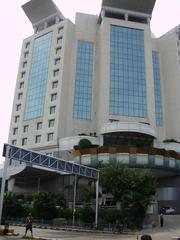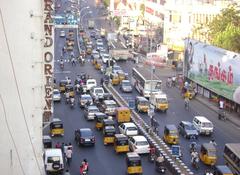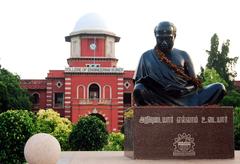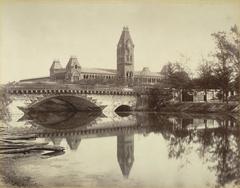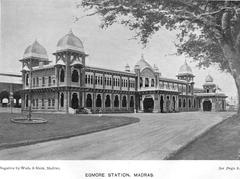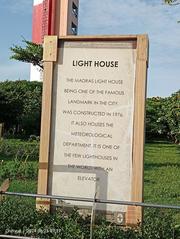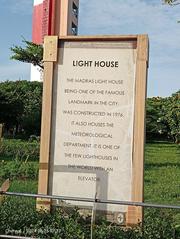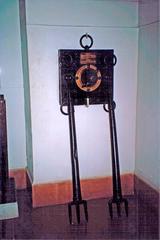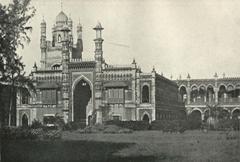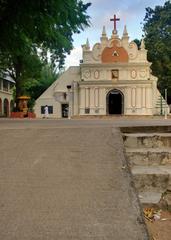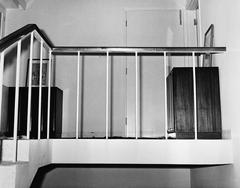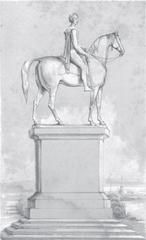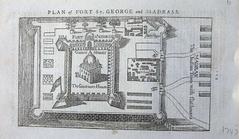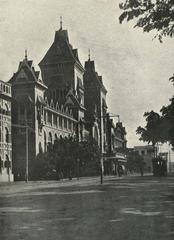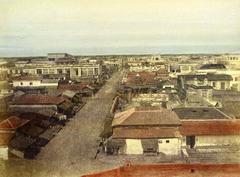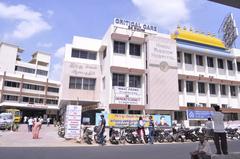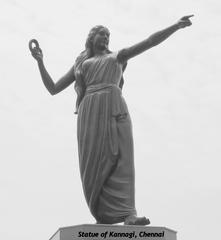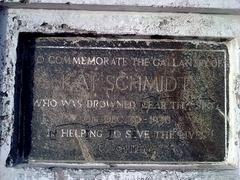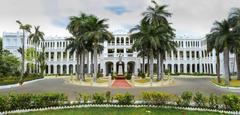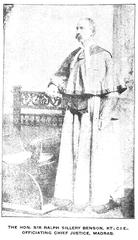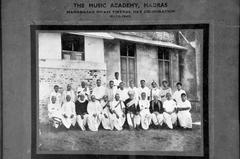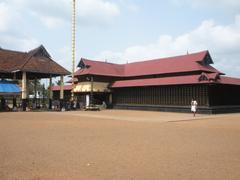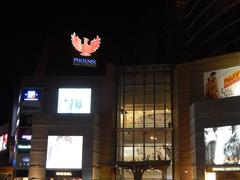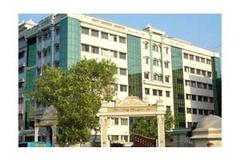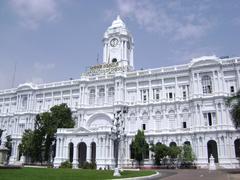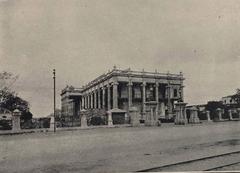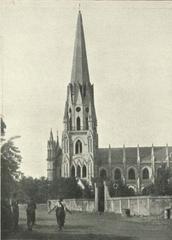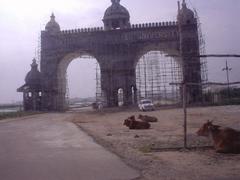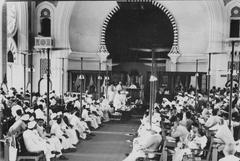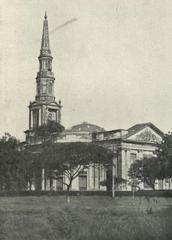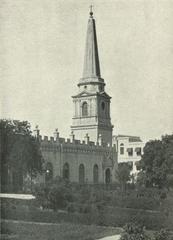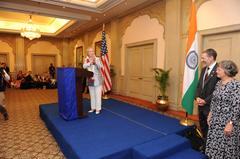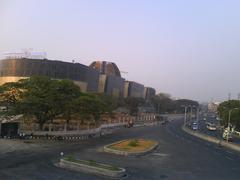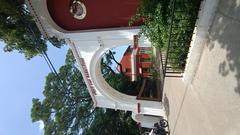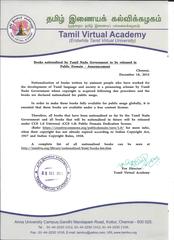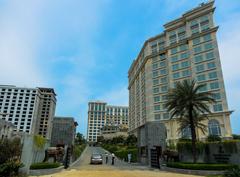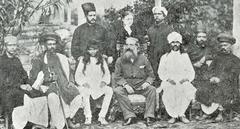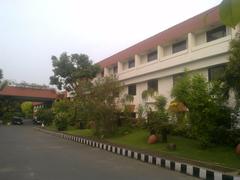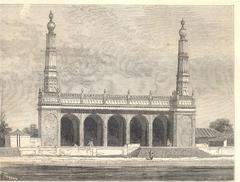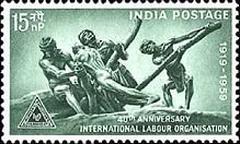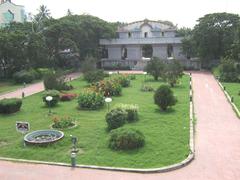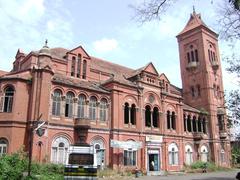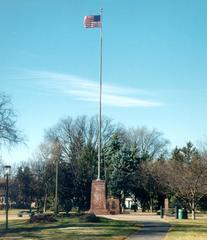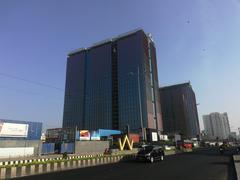Bharat Insurance Building Chennai: Visiting Hours, Tickets, and Historical Guide
Date: 15/06/2025
Introduction
Prominently located on Anna Salai, Chennai’s historic commercial artery, the Bharat Insurance Building stands as an enduring symbol of the city’s colonial legacy and architectural brilliance. Constructed in 1897 and also known as the Kardly Building, this iconic structure is celebrated for its exquisite Indo-Saracenic style—a harmonious blend of Indian, Islamic, and Victorian Gothic elements. Over its long history, the building has witnessed shifts in ownership, function, and conservation status, reflecting both the rise of Indian enterprise during the colonial era and contemporary challenges of heritage preservation. This comprehensive guide explores the building’s architectural and historical significance, provides up-to-date visitor information—including visiting hours, ticketing, accessibility, and tips—and details ongoing conservation efforts and future prospects. Whether you are an architecture enthusiast, heritage lover, or tourist planning to explore Chennai’s historical sites, this article equips you with essential insights for an enriching experience of the Bharat Insurance Building (Indian Columbus; The Hindu; Nikhil Mani’s blog).
Table of Contents
- Historical and Architectural Significance
- Ownership Evolution and Heritage Status
- Indo-Saracenic Architecture: Key Features
- Visiting Hours, Tickets, and Practical Information
- Accessibility, Travel Tips, and Nearby Attractions
- Current Conservation Status and Restoration
- Frequently Asked Questions (FAQ)
- Conclusion and Visitor Recommendations
- Sources and Further Reading
Historical and Architectural Significance
Colonial Origins and Symbolism
Commissioned in 1897 by the Kardly family, the Bharat Insurance Building rapidly became a commercial landmark and a testament to Chennai’s cosmopolitan ethos during the British Raj. Its association with the Bharat Insurance Company—one of India’s earliest indigenous insurance firms—underscored the emergence of Indian entrepreneurship amidst colonial rule (The Hindu).
Architectural Marvel
The building’s Indo-Saracenic design incorporates domes, pointed arches, stained glass, and ornate stucco work, creating a visually captivating façade on Anna Salai. Its spatial layout—featuring large halls, high ceilings, and encircling verandahs—reflects both functional and climatic considerations, maximizing ventilation and natural light (Nikhil Mani’s blog).
Ownership Evolution and Heritage Status
- Early Ownership: Built by the Kardly family, later serving as headquarters of the Bharat Insurance Company.
- Post-Independence: After nationalization in 1956, the building came under the Life Insurance Corporation of India (LIC).
- Heritage Recognition: Listed as a heritage structure by CMDA and INTACH, its proposed demolition in the 2000s triggered legal battles and public advocacy, culminating in the Madras High Court granting ‘Grade A’ heritage status and halting demolition (Sriram V blog).
Indo-Saracenic Architecture: Key Features
The Bharat Insurance Building epitomizes the Indo-Saracenic style, characterized by:
- Domes and Minarets: Distinctive, multi-tiered domes and minarets rise dramatically above the building, echoing Mughal and Islamic influences.
- Arches and Verandahs: Pointed and horseshoe arches, supported by carved columns, define the façade and wide verandahs provide shade.
- Stained Glass and Ornamentation: Once, vibrant stained glass bathed interiors in color, while elaborate stucco and terracotta panels adorn the exterior.
- Structural Techniques: Brick and lime mortar construction, with load-bearing walls supporting arches and domes.
This architectural blend situates the building alongside other Indo-Saracenic masterpieces like Mumbai’s Victoria Terminus, but with unique local adaptations (Nikhil Mani’s blog; Sriram V blog).
Visiting Hours, Tickets, and Practical Information
Visiting Hours
- Interior Access: Currently closed to the public due to ongoing structural restoration and safety concerns.
- Exterior Viewing: The façade can be admired and photographed from Anna Salai at any time during daylight hours.
Tickets and Entry
- Exterior Viewing: Free; no ticket or entry fee required.
- Guided Tours: Occasionally, local heritage groups include the building’s exterior in heritage walks. Check group schedules for ticketing details.
Accessibility
- Location: Centrally situated on Anna Salai, approx. 2 km from Chennai Central Station and 17 km from the airport.
- Transport: Access via public buses, Chennai Metro (LIC Station nearby), taxis, and auto-rickshaws.
- Facilities: No public amenities at the site; restrooms and cafés available in the nearby Express Avenue Mall.
Visitor Tips
- Visit early morning or late afternoon for optimal lighting and comfort.
- Wear comfortable walking shoes and carry water, especially during warmer months.
- Respect restoration barriers and signage; drone photography is not permitted.
Nearby Attractions
- Government Museum and Connemara Library: Rich collections of South Indian art and literature, 2 km away.
- Express Avenue Mall: Dining, shopping, and restrooms, 1 km away.
- Marina Beach: Iconic urban beach, 3 km away.
- Kapaleeswarar Temple: Vibrant Dravidian temple, 5 km away.
- San Thome Cathedral Basilica: Neo-Gothic church, 4 km away.
- Valluvar Kottam: Monument to Tamil poet Thiruvalluvar, 3 km away.
- Fort St. George: Historic fort and museum, 5 km away.
Current Conservation Status and Restoration
Challenges
- Structural Deterioration: Prolonged neglect, monsoon damage, and lack of maintenance have led to severe decay, including collapsed roofs and eroded ornamentation.
- Ownership Issues: LIC’s reluctance to invest in restoration delayed progress; legal disputes over demolition versus conservation impeded timely intervention.
- Urban Pressures: Heavy traffic, vibrations, and development on Anna Salai threaten the building’s integrity and prominence.
Restoration Efforts
- Judicial Action: Madras High Court intervention protected the building from demolition and mandated a heritage assessment.
- Recent Developments: In 2023, LIC issued a tender for scientific restoration, potentially paving the way for adaptive reuse as a cultural center or museum.
- Heritage Advocacy: Organizations like INTACH and local historians have played a pivotal role in raising awareness and securing heritage status.
Looking Forward
Adaptive reuse and sensitive restoration are viewed as sustainable solutions, ensuring the building’s legacy and financial viability. Its eventual revival is expected to set a precedent for heritage conservation in Chennai.
Frequently Asked Questions (FAQ)
Q: What are the Bharat Insurance Building’s visiting hours?
A: The building’s interior is closed for restoration; the exterior can be viewed at any time during daylight hours.
Q: Is an entry ticket required?
A: No; exterior viewing is free. Guided tours that include the site may require tickets.
Q: Are guided tours available?
A: Yes, some heritage walk organizers include the building’s exterior. Check their websites for schedules.
Q: Is the building accessible for differently-abled visitors?
A: The nearby LIC Metro Station is accessible, but sidewalks around the building may be uneven due to restoration.
Q: What other historical attractions are nearby?
A: The Government Museum, Express Avenue Mall, Marina Beach, and several temples and churches are within a short distance.
Conclusion and Visitor Recommendations
The Bharat Insurance Building is a crown jewel of Chennai’s colonial and architectural heritage. While access to its interior is restricted due to ongoing restoration, its striking façade remains an essential stop for heritage enthusiasts exploring Anna Salai and the city’s historical core. The building’s preservation journey—marked by legal intervention, community advocacy, and renewed restoration—serves as a model for urban heritage management. Visitors are encouraged to include the building in their Chennai itineraries, join local heritage walks, and stay informed through official channels and heritage platforms.
Recommendations:
- Visit during the cooler months (November–February) for comfort.
- Combine your visit with other nearby sites for a comprehensive heritage experience.
- Support conservation by engaging with heritage organizations and sharing your experiences.
Sources and Further Reading
- Bharat Insurance Building Chennai: History, Visiting Hours, and Heritage Significance, Indian Columbus
- Heritage Watch: Bharat Insurance Building, The Hindu
- Bharat Insurance Building: Architectural Marvel and Visitor’s Guide, Nikhil Mani’s blog
- Bharat Insurance Building Can It Not Be Retained In Full?, Sriram V blog
For more travel tips and heritage updates, download the Audiala app and follow our social media channels for the latest on Chennai’s architectural treasures.
